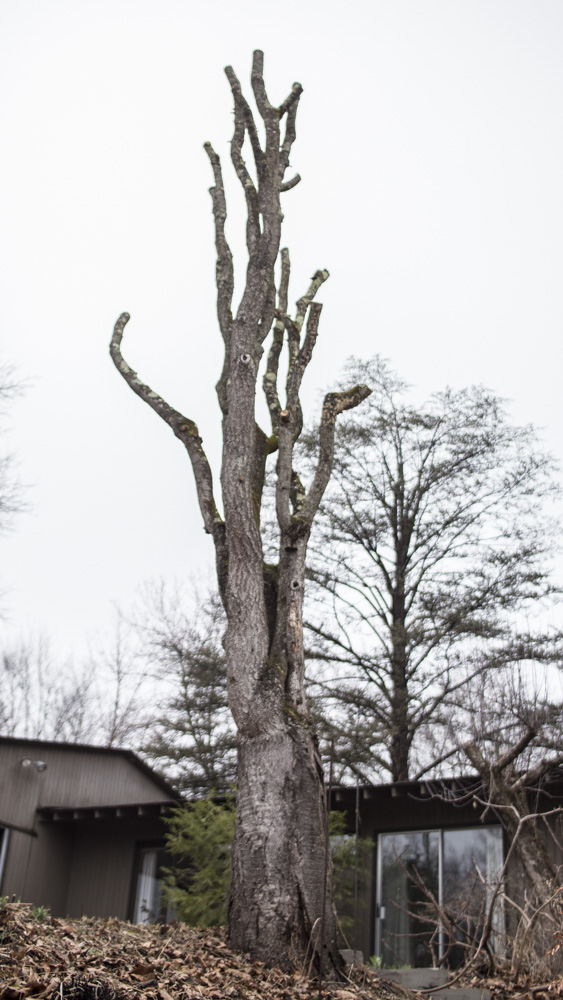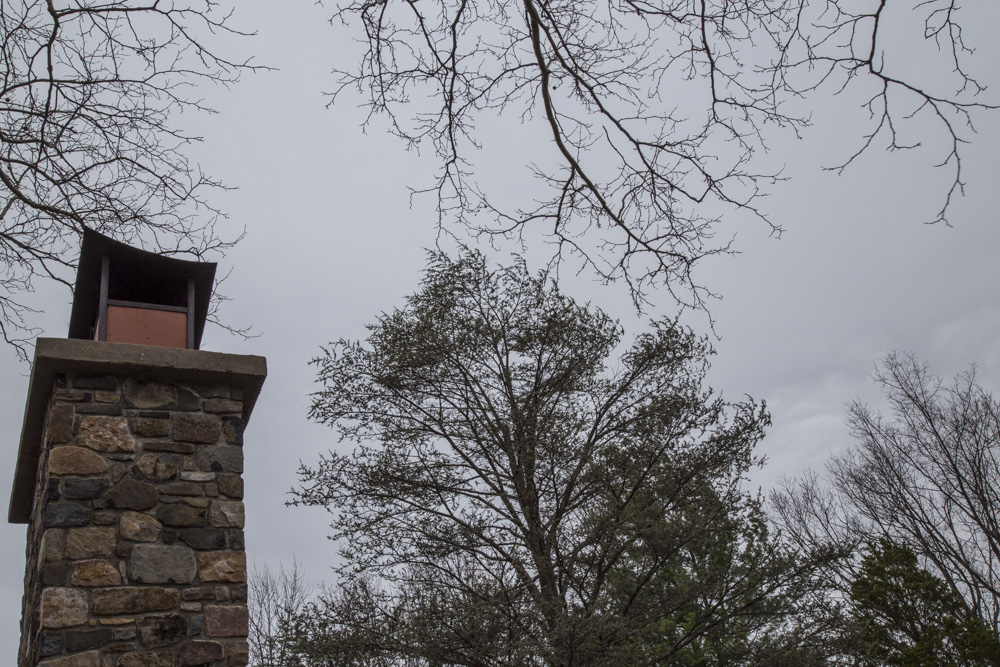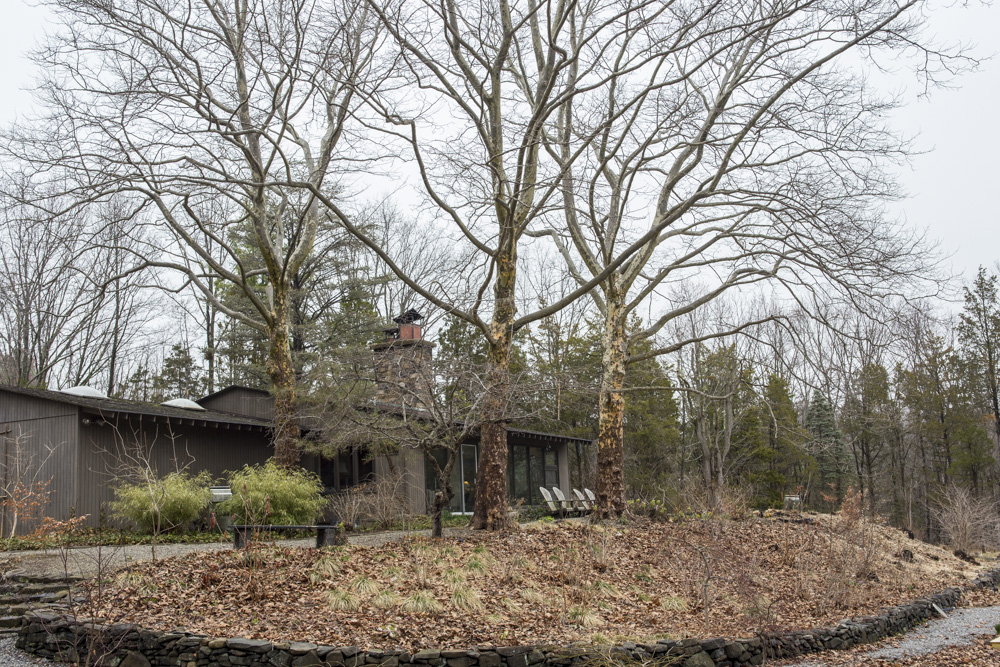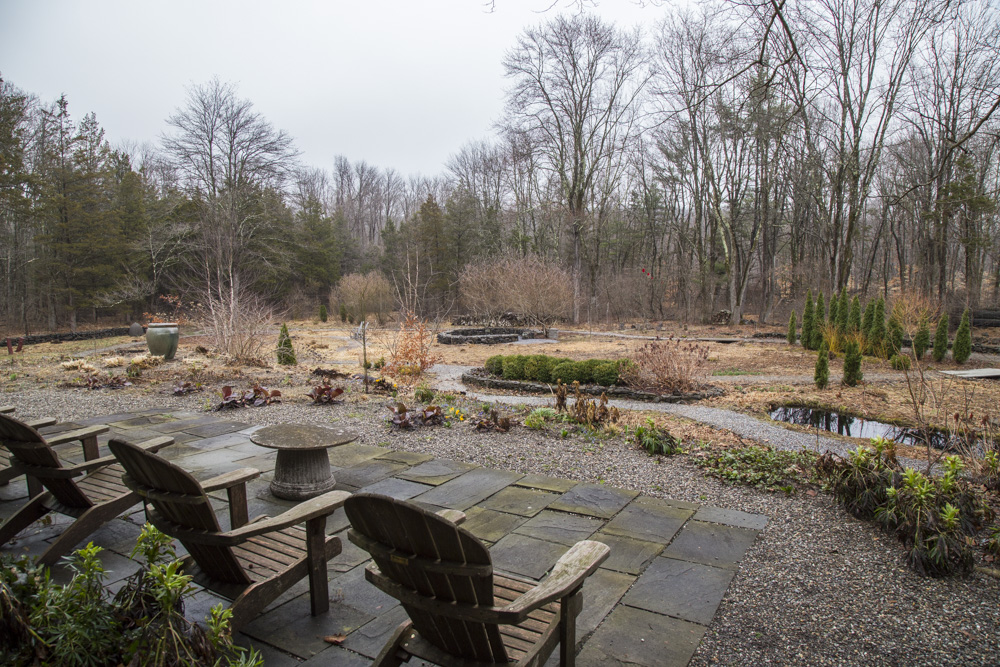Rot, decay, more life
 Behind the house, a very old Japanese weeping cherry has reached the end of its life. Flowering has declined dramatically over the past few years and limbs have begun to rot and fall.We've lost many trees over the almost ten years I've been gardening at Federal Twist. The soil is shallow and wet, with layered rock near the surface, so many simply fall over in heavy wind. Woodpeckers and sapsuckers drill thousands of holes, causing direct damage to some trees, which weaken, then die. Rot is commonplace.At the same time, life is everywhere. The rotting timber all around provides home and sustenance for many invertebrate life forms, homes for solitary bees and wasps and beetles. The woodpeckers that thrive on aging snags and dead limbs are emblematic of the processes silently at work here. This is not so much a place defined by decay, as it is a place in which the beginnings and endings of life are in closer acquaintance than elsewhere. Or so it seems.A local tree care company proposed to do the work I needed. Top on the list was the almost dead weeping cherry planted in 1965 when the house was built.
Behind the house, a very old Japanese weeping cherry has reached the end of its life. Flowering has declined dramatically over the past few years and limbs have begun to rot and fall.We've lost many trees over the almost ten years I've been gardening at Federal Twist. The soil is shallow and wet, with layered rock near the surface, so many simply fall over in heavy wind. Woodpeckers and sapsuckers drill thousands of holes, causing direct damage to some trees, which weaken, then die. Rot is commonplace.At the same time, life is everywhere. The rotting timber all around provides home and sustenance for many invertebrate life forms, homes for solitary bees and wasps and beetles. The woodpeckers that thrive on aging snags and dead limbs are emblematic of the processes silently at work here. This is not so much a place defined by decay, as it is a place in which the beginnings and endings of life are in closer acquaintance than elsewhere. Or so it seems.A local tree care company proposed to do the work I needed. Top on the list was the almost dead weeping cherry planted in 1965 when the house was built. I'm keeping the main trunk and limbs as a tree sculpture, for a while at least, until it's so far gone I have to plant a replacement. Virginia creeper is growing up one side and I hope to get it to quickly cover the entire structure. For a few years, it will be glorious in the autumn, covered in brilliant red Parthenocissus quinquefolia fluttering in the sunlight.
I'm keeping the main trunk and limbs as a tree sculpture, for a while at least, until it's so far gone I have to plant a replacement. Virginia creeper is growing up one side and I hope to get it to quickly cover the entire structure. For a few years, it will be glorious in the autumn, covered in brilliant red Parthenocissus quinquefolia fluttering in the sunlight. And it will make the woodpeckers happy.The other major problem was a large Blue Atlas Cedar near the front entrance to the house. (You can see it in the background of the photos above and below.) I attributed the dying crown and loss of foliage to the hundreds of holes drilled into the bark by sapsuckers. Now the dead leader has been cut (there's a replacement leader) and soon the root zone will be treated with nutrient solution, as we try to revive it, or at least extend its life.
And it will make the woodpeckers happy.The other major problem was a large Blue Atlas Cedar near the front entrance to the house. (You can see it in the background of the photos above and below.) I attributed the dying crown and loss of foliage to the hundreds of holes drilled into the bark by sapsuckers. Now the dead leader has been cut (there's a replacement leader) and soon the root zone will be treated with nutrient solution, as we try to revive it, or at least extend its life. The tree specialists also removed dead limbs from the three massive Sycamores just outside the house. These are a singular garden feature. I'm pleased they show no signs of decay ... yet.
The tree specialists also removed dead limbs from the three massive Sycamores just outside the house. These are a singular garden feature. I'm pleased they show no signs of decay ... yet. They tower above everything else in the garden, shelter and cool the house in summer, offer the only shade for sitting outside on hot afternoons, and their mottled bark is a constant wabi-sabi pleasure in all seasons.
They tower above everything else in the garden, shelter and cool the house in summer, offer the only shade for sitting outside on hot afternoons, and their mottled bark is a constant wabi-sabi pleasure in all seasons. Looking out over the flat, clean plate of the garden, it's hard to imagine the voluminous life that will rise from that dreary earth. But it will, fulfilling the promise hidden deeply in the paradox of life in death, death in life.
Looking out over the flat, clean plate of the garden, it's hard to imagine the voluminous life that will rise from that dreary earth. But it will, fulfilling the promise hidden deeply in the paradox of life in death, death in life.
"April is the cruellest month, breeding
Lilacs out of the dead land, mixing
Memory and desire, stirring
Dull roots with spring rain."
I've always felt conflict when I read the opening lines of Eliot's The Wasteland. The words are about loss of faith and hopelessness, about endings, in the spring, a time that usually awakens other emotions, while the passage as a poetic object, with its precise language, powerfully emotional verbals (breeding, mixing, stirring), and cinematic imagery is a beautiful poetic object that awakes emotions of admiration and aesthetic pleasure, contradicting the very the sense of the passage. A paradox, then--like the landscape of my garden, giving both death and life.